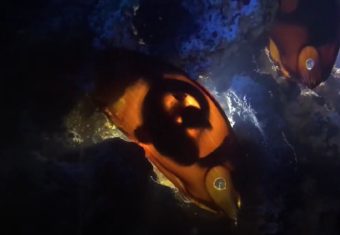
I have always thought of scientists as real-life wizards, making possible what was once only in the realm of science fiction. This belief was reaffirmed by researchers at the Okinawa Churaumi Aquarium, who—get this—created an artificial womb that allows premature sharks to develop to full term.
The focus here is on the Short-tail Lanternsharks, small predators inhabiting parts of the Indian Ocean. Only 46 cm long, these mysterious sharks live at great depths and glow in the dark. Many species of lantern sharks remain insufficiently studied. However, these tiny sharks often get accidentally caught in nets, and conscientious fishermen strive to return them to the ocean or quickly care for them in an aquarium.
Thus, the Okinawa aquarium came into possession of Short-tail Lanternsharks. They noticed that embryos in the mother’s womb remain alive for a certain time, even if the mother has died. These sharks are ovoviviparous, meaning the female gives birth to live young instead of laying eggs. However, if a pup is born prematurely, its inability to regulate salt levels in contact with seawater leads to death within a few hours.
To help premature pups develop to full term, Japanese scientists developed an artificial womb that mimics conditions in the mother’s womb. In their scientific paper published in the journal Frontiers in Fish Science, the researchers explain how they achieved conditions similar to those in the female’s womb—by filtering water in specially made tanks to enrich it with oxygen and using UV light for disinfection.
Despite these efforts, the experiments faced a high mortality rate of embryos, prompting scientists to search for the cause. Although the embryos fully developed, they died shortly after contact with salt water. Consequently, scientists adopted the method of gradually mixing artificial amniotic fluid with salt water, similar to how the short-tail lantern shark female prepares for birth.
The latest attempt finally brought success! Out of 33 embryos, three survived and can now be seen happily swimming as adults in the Okinawa Churaumi Aquarium.
This amazing experiment provides hope for the recovery of other endangered species that can avoid extinction only with the help of science. Scientists have already mastered the skill of artificial insemination, and it seems that artificial wombs will further facilitate and accelerate the repopulation of critically endangered species. Moreover, progress in the development of artificial wombs is an important step towards creating a womb for premature human babies, adding even greater significance to the Japanese scientists’ experiment.
Let’s hope that science will always be at the service of both humans and animals, as is the case here.

